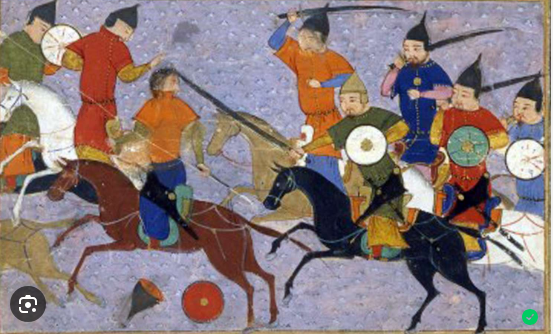The Journey of Homo Sapiens:
From the Neolithic Revolution to 2024
and Beyond
From Nomads to Settled Societies
Around 10,000 years ago, Homo sapiens embarked on a
monumental shift from nomadic hunter-gatherers to settled agricultural
societies, marking the beginning of the Neolithic Revolution. This transition
was driven by the domestication of plants and animals, which allowed humans to
establish permanent settlements. Early farmers cultivated crops such as wheat
and barley, while domesticating animals like sheep and cattle. This shift not
only enabled population growth but also led to the development of complex social
structures, as surplus food allowed for specialization of labor and the
emergence of trade.
Rise and Fall of Civilizations
The growth of agriculture set the stage for the rise of
early civilizations. The first urban societies, such as those in Mesopotamia,
Ancient Egypt, the Indus Valley, and China, emerged around 3,000 BCE. These
civilizations developed writing systems, centralized governance, and monumental
architecture. The rise of empires, such as the Roman Empire and the Han
Dynasty, further advanced technological and cultural achievements. However, the
decline of these empires often followed patterns of overexpansion, economic
strain, and internal strife, illustrating the cyclical nature of human progress
and decline.
Technological, Cultural, and Scientific
Advancements
Throughout history, technological innovations have
dramatically transformed human societies. The Middle Ages saw the invention of
the wheelbarrow and advancements in agricultural tools. The Renaissance sparked
a revival of science and art, laying the groundwork for the Enlightenment,
which emphasized reason and empirical evidence. The Industrial Revolution,
beginning in the 18th century, was a particularly transformative period. It
introduced mechanized production, which drastically increased productivity and
led to urbanization, altering social and economic structures.
The 20th century brought about unprecedented changes with
the development of the internet, computers, and telecommunications. The digital
age has interconnected the globe, leading to rapid dissemination of information
and fostering globalization. Major historical events, such as the World Wars
and the Cold War, have reshaped international relations and influenced global
policies. Technological advancements have accelerated the pace of change,
impacting every facet of life from communication to transportation.
The Current State of Humanity
In 2024, humanity stands at a crossroads of technological
and societal evolution. Advances in artificial intelligence (AI), biotechnology,
and renewable energy are driving innovation and addressing critical global
challenges. However, issues such as climate change, resource depletion, and
socio-economic inequality remain pressing concerns. The quest for
sustainability and peace continues to shape human endeavors, with efforts
focusing on reducing environmental impact and fostering global cooperation.
Future Predictions: The Role of
Artificial Intelligence
Artificial intelligence holds transformative potential for
the future of humanity. As AI technologies advance, they promise to
revolutionize industries, enhance daily life, and address global challenges. In
medical research, AI could accelerate the discovery of cures for diseases
through sophisticated data analysis and pattern recognition. In agriculture,
AI-driven systems could optimize crop yields, minimizing environmental impact
and ensuring food security.
In education, AI tutors could provide personalized learning
experiences, adapting to individual student needs and helping them achieve
their full potential. The creative realm could also benefit from AI
collaboration, with AI assisting artists and writers in producing innovative
works. Furthermore, AI has the potential to tackle climate change by developing
smart cities and sustainable practices.
Scenario of Human-AI Partnership
Envision a future where humans and AI work seamlessly
together. In this scenario, AI assists in various fields: accelerating medical
research, optimizing agricultural practices, and personalizing education. This
partnership extends to creative endeavours, where AI collaborates with human
artists to push the boundaries of creativity. Together, humans and AI address
global challenges such as climate change, developing technologies that promote
sustainability and enhance quality of life.
Cautionary Aspects and Ethical
Considerations
Despite the immense potential of AI, it is crucial to
address the associated risks and challenges. Ethical dilemmas surrounding AI
include privacy concerns, job displacement, and biased decision-making. As AI
systems become more integrated into society, establishing robust regulations
and ethical guidelines is essential to ensure responsible development and use.
Continuous oversight, transparency, and collaboration
between policymakers, technologists, and society are necessary to mitigate
risks and harness AI’s potential for the greater good. Ensuring that AI
technologies are developed with ethical considerations in mind will help
prevent negative consequences and promote equitable outcomes.
Positive Aspects and Transformative
Potential
The transformative potential of human-AI partnerships is
immense. AI can enhance human capabilities, drive innovation, and improve
quality of life. By leveraging AI, we can solve complex problems more efficiently,
foster economic growth, and achieve breakthroughs in healthcare, education, and
environmental sustainability. This collaborative approach promises a future
where technology empowers humanity to reach new heights and create a better
world for all.
Conclusion
The journey of Homo sapiens from the dawn of the Neolithic
Revolution to the present day has been marked by profound transformations. From
the development of agriculture to the rise of civilizations and the advent of
the digital age, humanity has continually evolved and adapted. As we move
forward, the partnership between humans and AI holds the potential to address
global challenges and drive progress. By navigating the ethical implications
and fostering collaboration, we can harness AI’s transformative power to build
a more sustainable, equitable, and innovative future.

Comments
Post a Comment